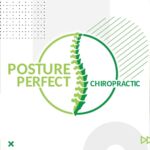A Chiropractor’s Guide To Posture: How Good Posture Can Improve Overall Health
Good posture, which is having the backbone or the spine in neutral alignment, is something that is overlooked by many. This should not be the case because it is essential when it comes to ensuring that one’s body mechanics is not compromised.
Putting the said factor into consideration, it should not be surprising why many opt to be treated by a chiropractor for posture. With regular sessions, proper posture can be achieved and repeated movements that place undue stress on the joints can be addressed. In the long run, it can help maintain balance, reduce fatigue, and keep the body flexible.
A study on postural and overall wellness
In 2013, University of Baguio conducted a study that involved 281 participants, and of the said number, 85% experienced some level of postural deviations or asymmetries. This posed a serious concern for the postural and overall wellness of employees and students.

Consequently, the participants manifested postural faults commonly along the anteroposterior view and subsequently along the forward head posture as well as lateral view test. It paved the way to poor posture and contributed to the development of other musculoskeletal symptoms.
The respondents used over-the-counter drugs to treat pain instead of asking health professionals, “Can I correct my posture with exercise?” and performing lifestyle changes.
Even though the said study has a small sample size, it can give an idea of how posture problems can compromise overall health. That said, it’s best to take a closer look at the issue and find out how a chiropractor for posture can help.
Chiropractor for posture: How adjustments and manipulations can help
A chiropractic adjustment, which is also known as spinal manipulation, is a hands-on method that is commonly performed by a chiropractor for posture to treat conditions that are related to the spine. In general, it involves applying sudden and controlled force to specific joints in the spine and/or other body parts to improve joint function and reduce pain. This, in turn, can promote overall wellness by promoting natural healing.
During an adjustment session, a chiropractor applies manual pressure to manipulate targeted joints. It may also include gentle stretching, controlled thrusts, or sustained pressure, among others. Take note that the methods that are going to be used are based on a patient’s condition and the assessment of the said professional.
Here is a detailed breakdown of how a chiropractor can enhance posture:
Realign the spine
A realigned spine can improve posture, reduce pain, and lessen the symptoms of chronic ailments such as osteoarthritis. Below are two methods that are used to achieve the said spine condition.
-
- Correct subluxations – Here, a chiropractor for posture identifies and corrects subluxations or misalignments in the spine. They need to be addressed the soonest since they can put inappropriate pressure on the nerves.
Also, if left untreated, they may distort the natural curves of the spine and lead to poor posture. In the long run, this may lead to the development of a hunchback.
-
- Targeted adjustments – Targeted adjustments utilize controlled force to certain areas of the spine. If done properly, they can restore optimum alignment and lessen pressure on the nerves. Consequently, this can help muscles perform effectively and efficiently.
Reduce muscle tension and imbalance
A chiropractor can help reduce muscle tension and imbalance by addressing muscle compensation, particularly in the spine.
It’s important to note that tension and imbalance may prompt the muscles to compensate by inappropriately increasing their activity in an effort to stabilize the spine. This may cause them to become overactive and tight or underactive and weak, creating an imbalance that may distort posture.
With spinal adjustments, the spine’s proper alignment is restored. This can reduce the probability of muscle tension, regain balance, and enhance posture.
Increase range of motion
In simple terms, joint range of motion refers to how far and in what ways a joint can move. It becomes limited with age or due to muscle pain, stiffness, and the like.
The good news is that all is not lost for those who experience reduced range of motion because a chiropractor can release tension in the surrounding muscles and ligaments. In turn, this can improve the joint’s overall range of motion.
Promote body awareness
Chiropractors, in general, don’t just perform spinal adjustments as well as manipulations; they also offer guidance on proper posture and body mechanics. This can be extremely beneficial, especially in the long run because it can help identify and fix bad posture habits. Consequently, it can aid in improving and maintaining better posture even outside of chiropractic sessions.
Exercises that can complement chiropractic care
Patients need to be cautious when working out after a chiropractic session. As to the question, “Can I correct my posture with exercise?” The answer is yes. But it’s best to wait at least 30 minutes to an hour after a chiro session. This is important since ample time is necessary to allow the joints to stabilize and the muscles to become aligned to the changes that are made by the chiropractor for posture.
Below are some exercises that can help improve posture and complement chiropractic care:
-
-
Back and core exercises
-
Simple and easy-to-perform exercises such as plank, child’s pose, cat-cow, etc., can offer essential benefits for the lower and middle back. They can go hand in hand with chiropractic care by safely promoting spinal flexibility, strengthening the core muscles, and so forth.
-
-
Gentle lunges and leg stretches
-
Adding gentle lunges and leg stretches to workout routines can enhance alignment and build lower body strength, which can maximize the benefits of pelvic adjustments.
-
-
Wall stretches and shoulder rolls
-
Wall stretches and shoulder rolls are exercises that can be done practically anywhere and they can make a huge difference in one’s range of motion in the shoulder area. They work together with chiro shoulder adjustments to boost flexibility, reduce muscle tension, fix muscle imbalances, and improve posture.
-
-
Neck tilts and rotations
-
Gentle as well as concise neck tilts and rotations can improve flexibility and strength, which are crucial when it comes to supporting cervical adjustments. This can help patients move better since stiffness in the said body part is reduced. To add, the said exercise can also cut down the risk of neck injuries.
Summing up
In the end, individuals who often notice themselves developing a hunchback during work, slouching while watching TV, or constantly aching from a chronic case of “tech neck” are encouraged to visit a reputable chiropractor for posture. Poor posture may be the culprit and it’s best to undergo holistic remedies in the mold of chiropractic care to reclaim good posture, optimize body mechanics, and achieve a pain-free body.
Ready to address your poor posture the chiropractic way? Contact us, and our friendly personnel will guide you through the whole process and more.











